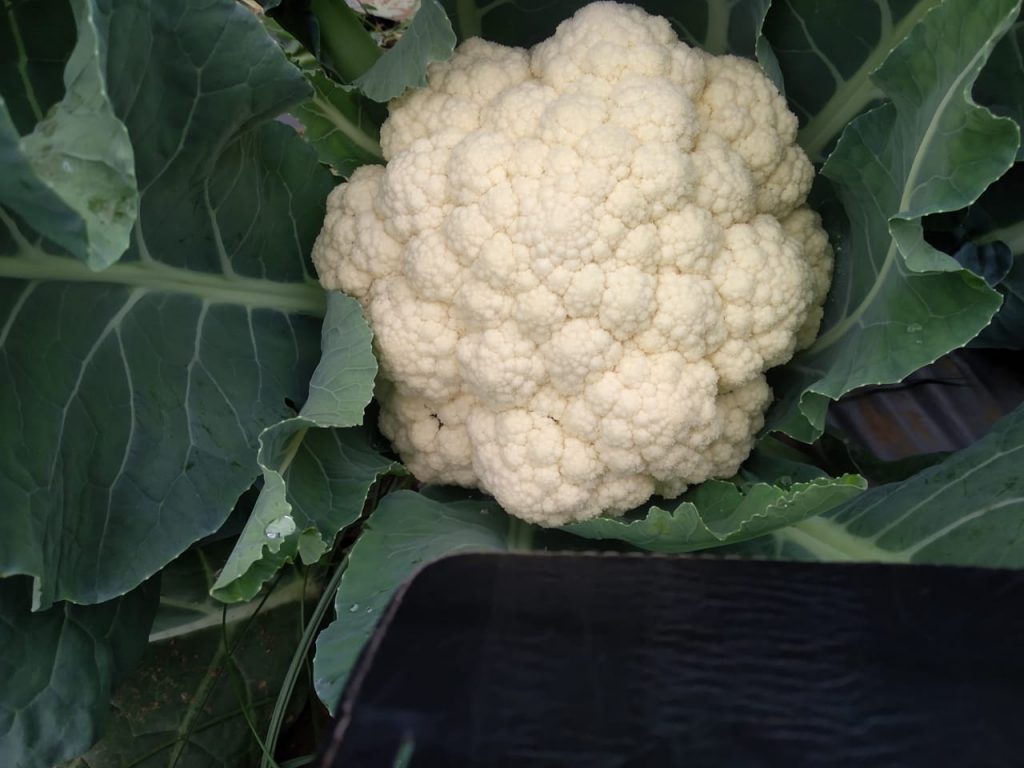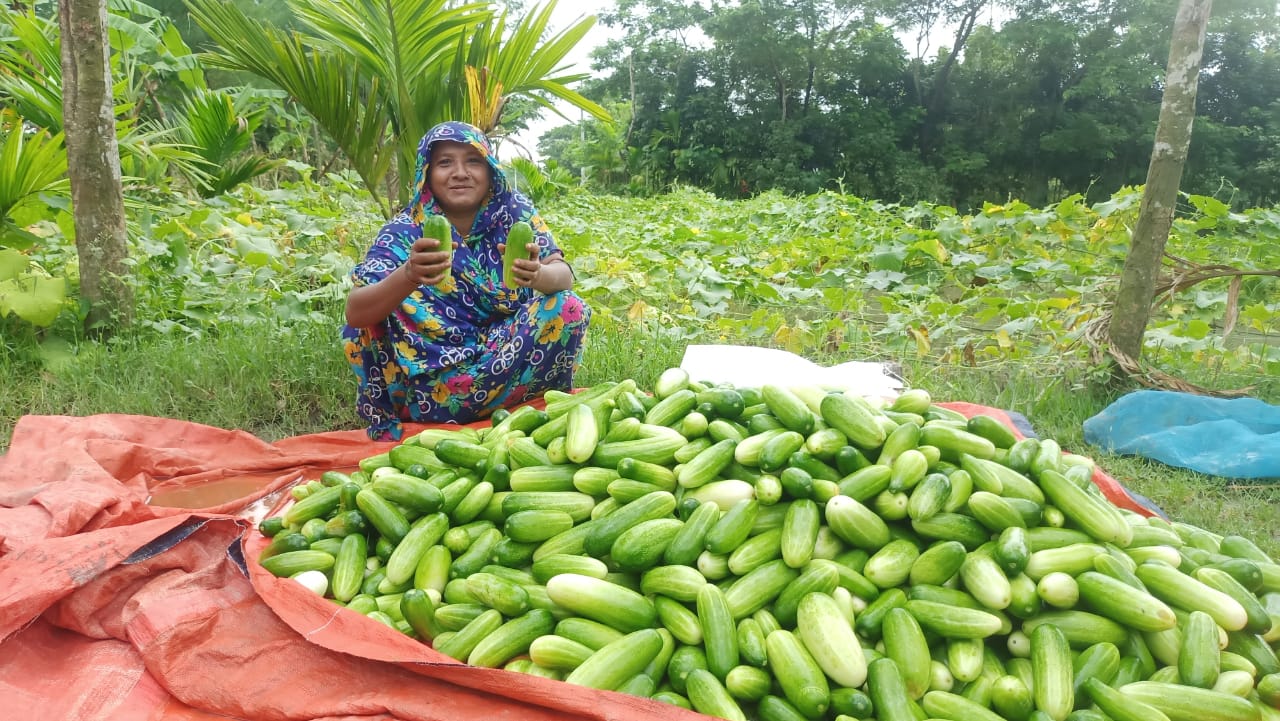Becoming a Role Model in India
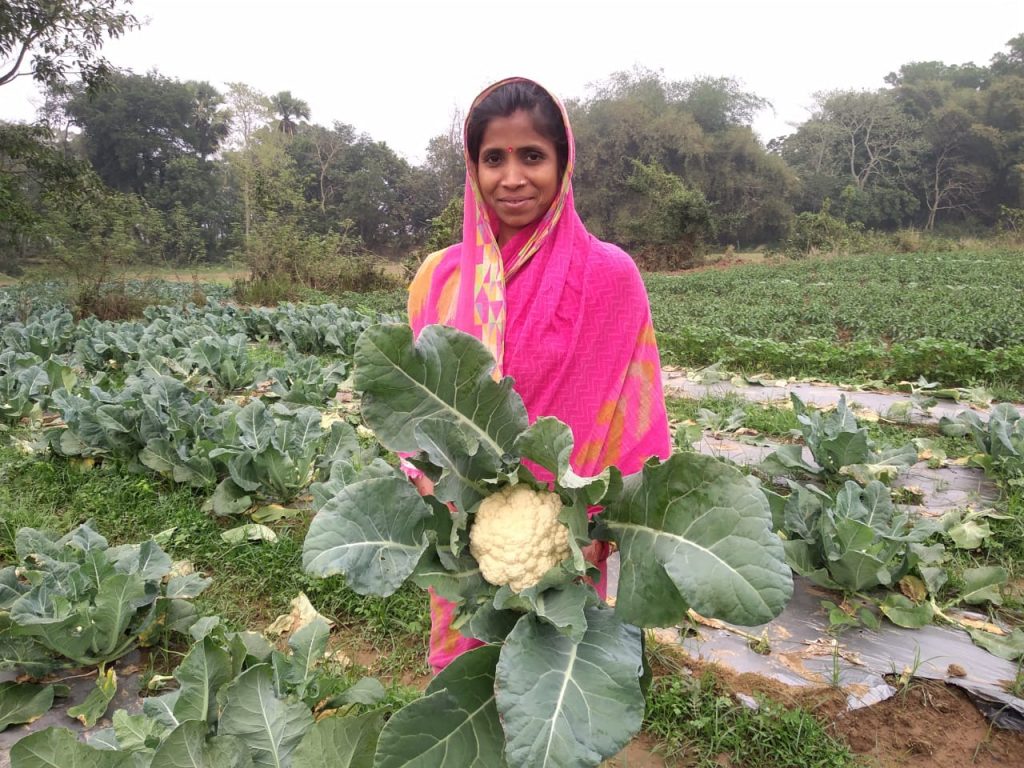
ODISHA STATE, INDIA – Jayanti Tarei has become a popular role model in vegetable farming in her village of Kudia, located in Odisha, India.
Jayanti, who is 38, has been farming for many years with her husband on their three acres of land, growing rice, beans, and sweet corn. She became interested in vegetable farming about 10 years ago and began using one acre of land to cultivate bitter gourd, coriander, chili, and other vegetables.
In October 2021, Jayanti met the East-West Seed Knowledge Transfer Foundation team. They introduced her to new farming methods and discussed the advantages of these techniques, including improvement in yields. Motivated by what she had learned, she decided to start a demonstration plot for cauliflower with the EWS-KT team.
Jayanti set up her demonstration plot on 200 square meters of land. Most demonstration plots showcase only the advanced techniques recommended by EWS-KT, but this one used both EWS-KT’s improved methods and, for comparison, traditional farming methods.
The team did a soil pH test to check the nutrient availability and taught Jayanti how to make raised beds. Her village is in a flood area, so the raised beds keep the plant roots from getting waterlogged and help to manage irrigation through a canal system between beds. With the land prepared, she learned about seedling media preparation and sowing techniques; using these new methods, she achieved a 99% seed germination rate.
“This was the first time that we produced seedlings by using seedling trays. We never knew about this technique, but we were amazed when we saw the higher germination,” Jayanti said.
During transplanting, she was impressed with the strong seedlings she had grown. She followed every EWS-KT technique and, with the guidance of the EWS-KT team, implemented them perfectly.
As the demonstration plot included both traditional and improved techniques, it was easy for her to see the differences in crop growth. In the traditional, unmulched beds, the plants were not as vigorous, and 50% of the plants were damaged by insect pests. But in the raised, mulched beds that followed EWS-KT methods, she had a strong and healthy plant population. As a result, she was able to produce high-quality cauliflower. She harvested 200 kilograms of cauliflower at her farm and earned a good price at the local market.
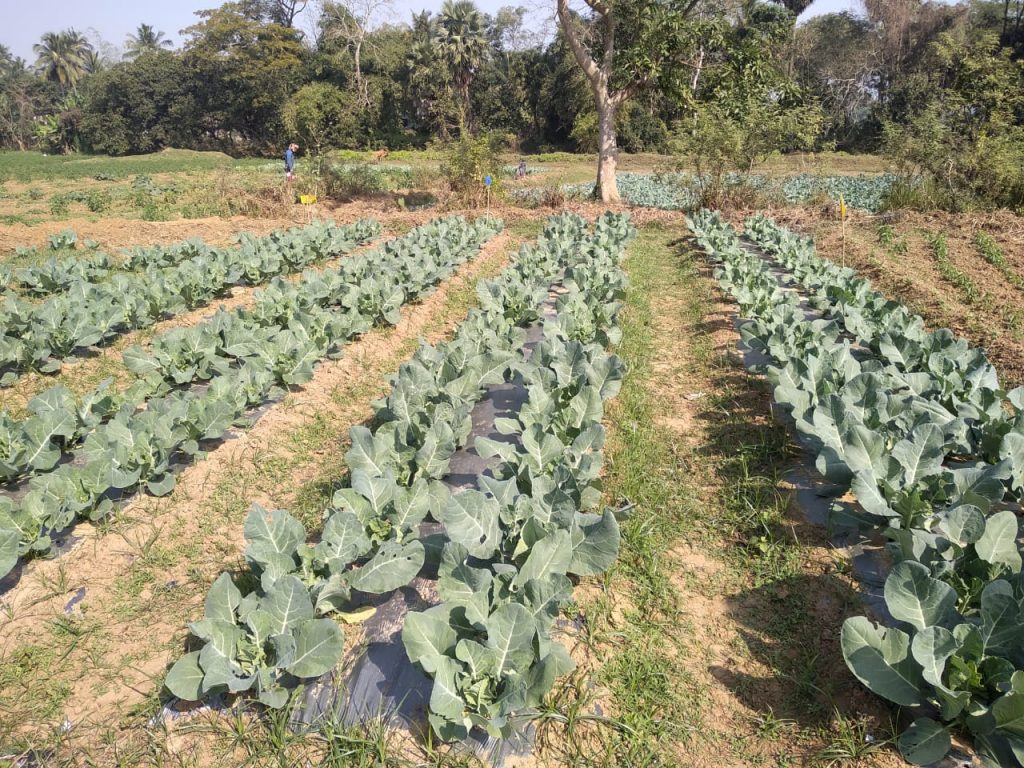
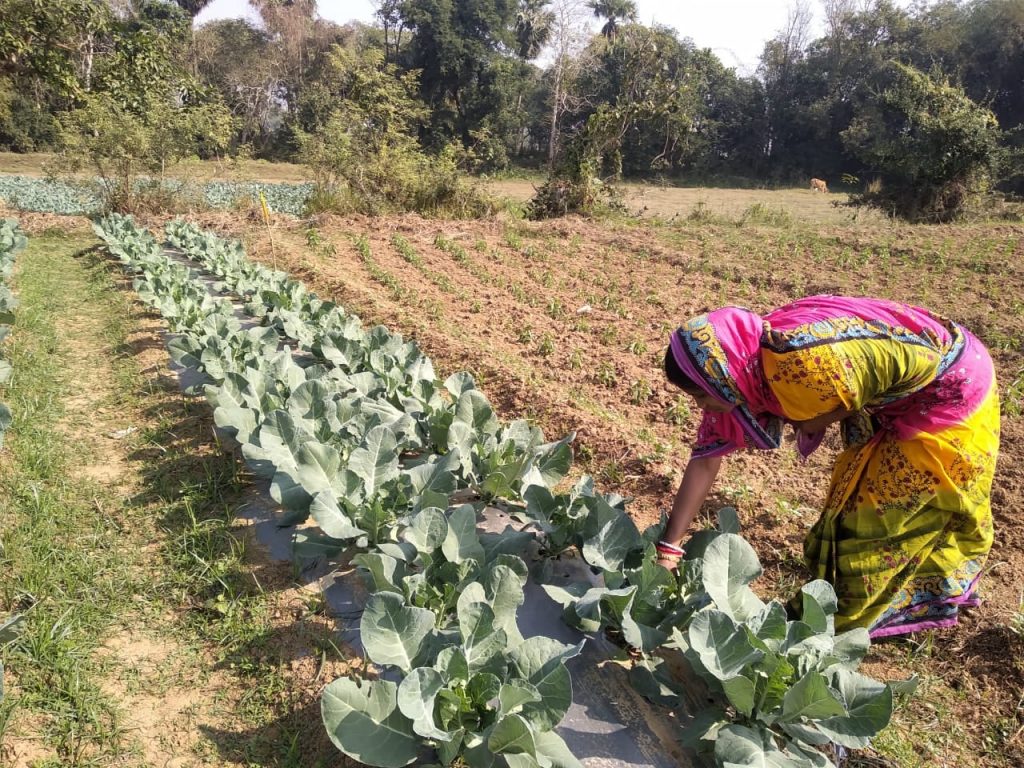
When Jayanti began practicing new farming techniques with EWS-KT, other farmers in her village were curious to see what was going on. As the difference in results between traditional and improved methods became more obvious, her demonstration plot—and Jayanti herself—became the center of attention. Other farmers were eager to learn from her, asking her which techniques she was using, what benefits she was seeing, and what knowledge she had acquired.
The EWS-KT team trained more than 50 farmers on new vegetable farming techniques at her demonstration plot, conducting four to five training sessions. At these trainings, Jayanti proudly shared her experience with the other farmers and suggested that they adopt the improved techniques.
Jayanti is grateful to the EWS-KT team and appreciates the techniques that she learned throughout the season. She has already decided to continue farming with the new methods and has started planning for future crops.
